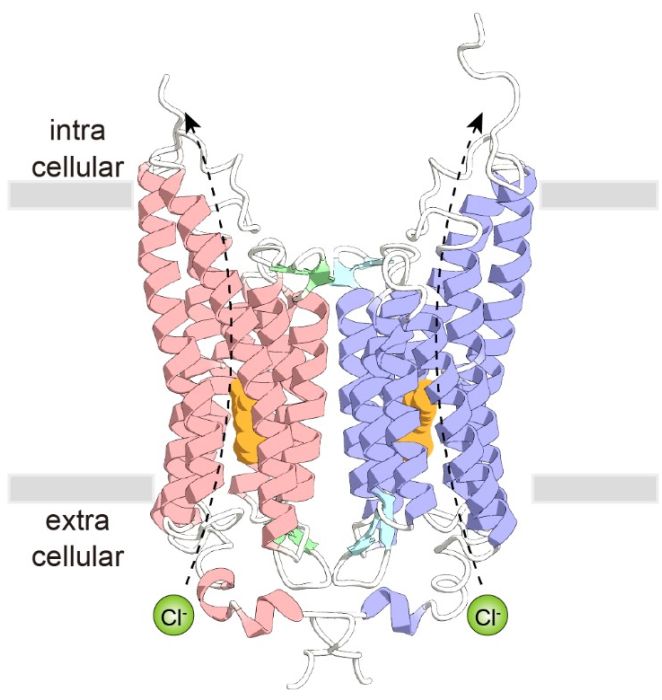The groups of Karl Deisseroth and Brian Kobilka at Stanford University and collaborators determined the crystal structure of the naturally-occurring channelrhodopsin variant, Guillardia theta anion channelrhodopsin-1 (GtACR1). GtACR1 was isolated from cryptophyte algae in 2015, and it is widely used as an optogenetic tool to inhibit neuronal firing with light. The structure reveals the unique architecture of GtACR1, including the extracellular domain, retinal-binding pocket, Schiff base region, and the anion conduction pathway. Together with electrophysiological and spectroscopic analyses, their studies illuminate the molecular basis for the naturally occurring light-gated anion channels, and provide a blueprint for the next-generation of inhibitory optogenetics tools.
 |
Figure: Structure of the naturally-occurring anion channelrhodopsin, GtACR1. |
Citation: Kim, YS, Kato, HE, Yamashita, K, Ito, S, Inoue, K, Ramakrishnan, C, Fenno, LE, Evans, KE, Paggi, JM, Dror, RO, Kandori, H, Kobilka, BK, Deisseroth K., Crystal structure of a natural anion-conducting channelrhodopsin GtACR1, Nature 561, 343-348 (2018). DOI: 10.1038/s41586-018-0511-6.